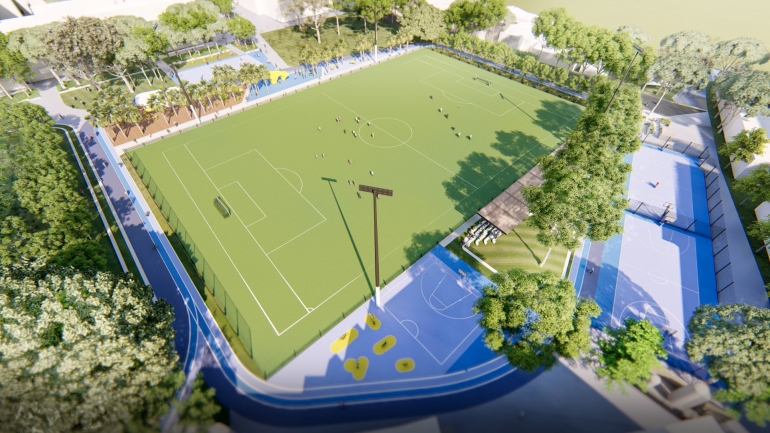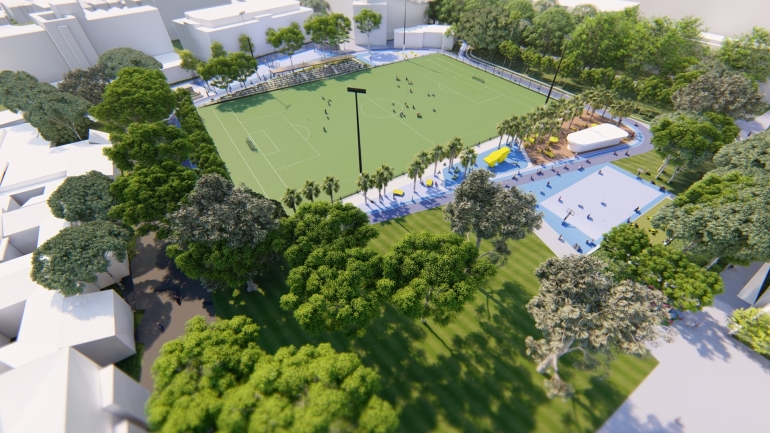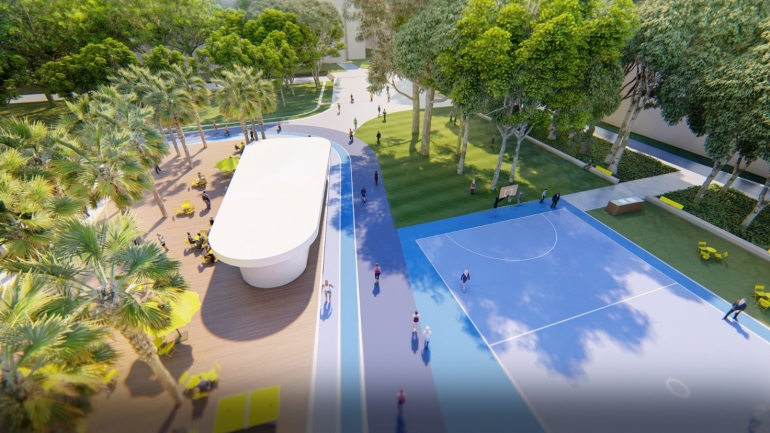PROJECT OVERVIEW
The Village Green was transformed into a brand-new world-class sport and leisure environment with facilities for playing multiple sports, exercising, socialising and relaxing on campus in a fresh, new way.
The vision for the Village Green was to transform the Kensington campus’s largest open space from an underutilised outdoor space to a vibrant and connected place that provides inclusive and exceptional sporting, recreational, social and wellness opportunities where students, staff and the community can come together to play, exercise, socialise and relax.
For students, the Village Green provides an enhanced and vibrant experience. There are increased opportunities for social and competitive student sport and activities. The new space provides multi-purpose facilities and contributes to enabling the UNSW Sport Strategy delivering on inclusivity and diversity with a focus on wellbeing and sustainability.
The multi-purpose synthetic pitch is all-weather, all-year round and caters for a broader range of sports, as well as providing all aspects of wellness including recreational sport, social interactions, fitness, and contemplation.
Another important aspect of this project is the sustainability benefit with the upgrade of the below ground stormwater infiltration tank. The Village Green is an essential part of the campus stormwater and infiltration system. Aligned with UNSW’s Environmental Sustainability Plan 2019-2021, a new tank was installed to capture campus stormwater underground, contribute to recharging the Botany Aquifer, and in doing so provides a substantial source of sustainable water supply on campus. Together with the multi-purpose pitch the redevelopment reduces water usage on the site.
TIMELINE OF WORKS
Works commenced: June 2021
Project completed: October 2022
The Village Green redevelopment features:
- Multi-purpose synthetic football field to FIFA and World Rugby accreditation standard
- Multi-purpose courts for netball, basketball, and futsal
- 500m walking and running track
- Outdoor fitness equipment
- Seated viewing grandstand (Moya Dodd Stand) and electronic scoreboard
- Sports and recreational lighting
- Landscaped social spaces including urban farm and public art opportunities
- Futureproofing for additional activities and amenities including food and beverage
- Below ground stormwater infiltration tank
- All gender bathrooms on the ground floor of Sam Cracknell Pavillion
- Homeground Cafe, operated by Arc.


